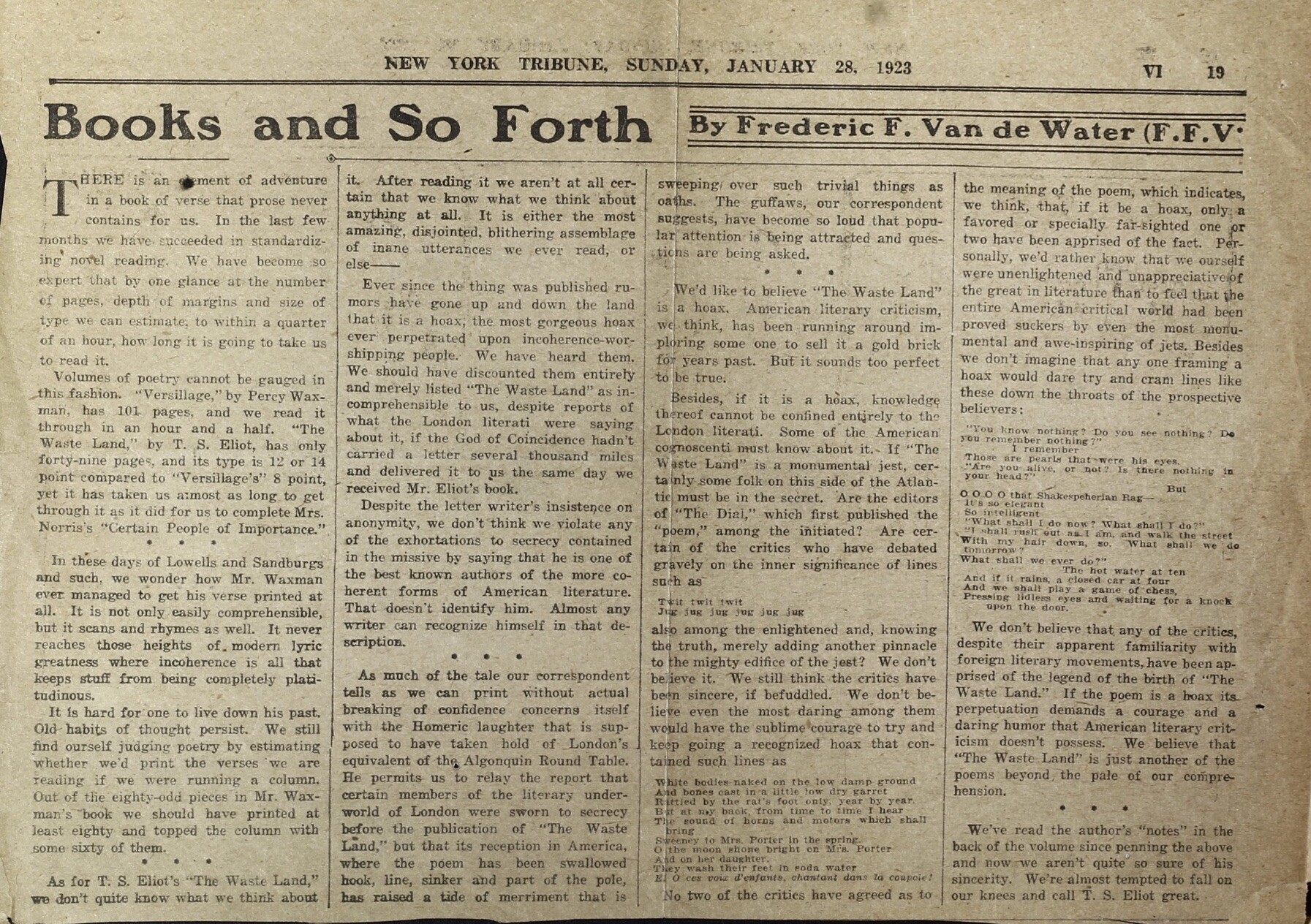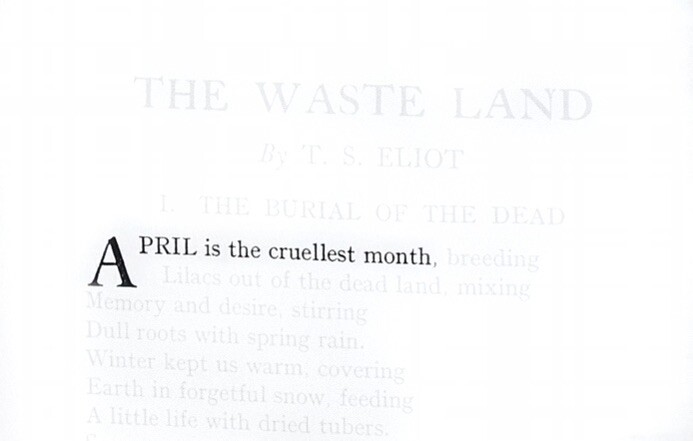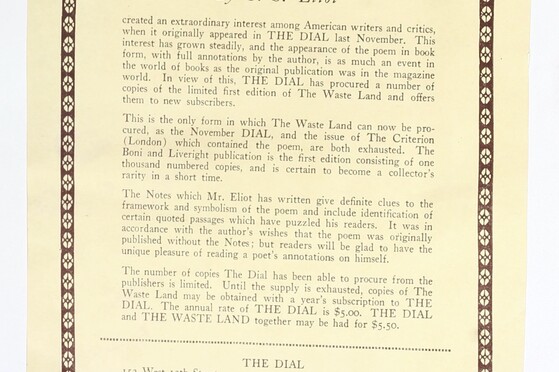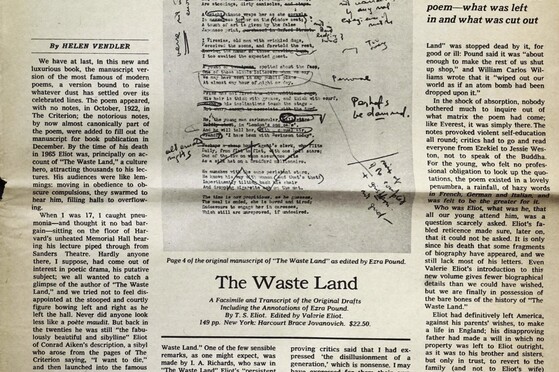The Waste Land can be thought of as a kind of “Land”-scape.
As Pound predicted, the poem did indeed turn out to be “very important”: it has left an undeniable impact on the literary landscape since its first publication one hundred years ago.
Taken together, the Donald Clifford Gallup Papers and the Dial/Scofield Thayer Papers offer evidence of this effect. By pulling together newspaper clippings, advertisements, and press releases that range from 1920s to the 1970s, these two collections offer an on-the-ground account of The Waste Land’s cultural impact.
The public image of The Waste Land began to take shape as soon as it was published. The Dial/Scofield Thayer Papers contain two advertisements for the first edition of The Waste Land, from December 1922 and January 1923:
As detailed in the Watson/Seldes correspondence in Section I, The Dial acquired copies of the limited first edition. These copies could be obtained only through a one-year subscription to The Dial. These advertisements begin by announcing that The Waste Land “created an extraordinary interest among American writers and critics, when it originally appeared in THE DIAL last November. This interest has grown steadily, and the appearance of the poem in book form, with full annotations by the author, is as much an event in the world of books as the original publication was in the magazine world.” This advertisement shows that The Dial recognized the importance of the poem, enough so to tie their subscriptions to the publication of the book.
After its publication, The Waste Land entered the sphere of criticism. The Donald Clifford Gallup Papers contain Gallup’s clippings of newspaper articles from the decades following the poem’s publication. Media coverage of the poem begins soon after the book’s publication. On January 28, 1923, the New York Tribune ran a review of the poem alongside a parody of it:

The author, journalist and book reviewer Frederic Franklyn Van de Water, writes, “As for T.S. Eliot’s ‘The Waste Land,’ we don’t quite know what we think about it. After reading it we aren’t at all certain that we know what we think about anything at all.” The article debates whether or not the poem’s perceived greatness is a “hoax,” and is skeptical of the literary world’s fervor for the poem. Ultimately, the article concludes, “We’re almost tempted to fall on our knees and call T.S. Eliot great.” Whether or not this statement is partially or fully ironic, it demonstrates the strong reactions elicited by Eliot’s poem.
In addition to this early commentary, Gallup’s clippings also show how the poem has continued to capture the attention of the literary community long after its initial publication. In particular, many items focus on the 1971 publication of a facsimile of The Waste Land with Pound’s annotations, edited by Valerie Eliot, Eliot’s wife. In 1968, the New York Public Library announced that they had uncovered the original manuscript of The Waste Land, annotated by Pound. Gallup’s papers include copies of the NYPL’s press release, newspaper clippings, and Gallup’s scans of the original manuscript. In 1971, this manuscript became the facsimile edited by Valerie Eliot, and the Gallup Papers chronicle the buzz surrounding its publication through an original advertisement, a new parody from The New Yorker, and reviews from sources ranging from The New York Times Book Review to the Eton College Chronicle:
These documents in the Dial/Scofield Thayer Papers and the Donald Clifford Gallup Papers offer a look at the public image of The Waste Land, tracing media coverage of the poem over time. When viewed alongside the stories in Sections I and II, they offer a map that describes how a Waste Land-scape has emerged around the poem over the course of the last century. As we mark the centennial of The Waste Land’s first publication in The Criterion, we can take time to explore not just this important moment in history, but also to chart the ways in which the poem continues to shape literary terrain today.
This research was compiled by Isabel Prioleau, a student research assistant in the Beinecke’s Yale Collection of American Literature, and a member of Yale College ‘25.


